Through data analysis, opportunity identification, and strategy recommendation, business analysts play a critical role in guaranteeing the success and efficiency of enterprises. However, business analysts must heavily depend on software tools and programs to carry out these activities efficiently. We shall examine the important question, “What software does a business analyst use?” in this post. We’ll dig into the essential software programs that enable business analysts to flourish in their positions and promote wise choices inside their companies.
What is a business analyst?
A business analyst is a professional who connects corporate stakeholders with technological teams. Their major responsibility is to examine data, processes, and systems within a business. To discover areas for improvement and make strategic recommendations. Business analysts are essential in fostering efficient communication, identifying business requirements, and ensuring that projects and initiatives are aligned with the company’s overarching goals and objectives. Their efforts are critical in facilitating well-informed choices and streamlining business operations.
Importance of Business Analysis
For various reasons, business analysis plays an important role in the corporate world. For starters, it bridges the gap between corporate objectives and the technical solutions required to achieve them. Second, business analysis is useful in lowering project risks. Furthermore, business analysis is critical for innovation and adaptation. Finally, business analysts’ work adds to knowledgeable decision-making and strategic planning. Both of which are essential to an organization’s sustainability and long-term success.
What Are Business Analyst Tools?
Business analyst tools are software resources and applications that help experts analyze data, processes, and systems inside a business. These tools perform a variety of tasks, including visualization of data, gathering requirements, modeling processes, and project management. Microsoft Excel for data analysis, business process modeling software like Visio, project management tools like Jira, and data visualization tools like Tableau are some common examples of business analysis tools. These technologies enable business analysts to expedite their jobs, communicate effectively with stakeholders, and offer data-driven suggestions. That results in more informed decision-making and better business outcomes.
Why do Business Analysts Need the Best Tools?
For several compelling reasons, business analysts require the greatest tools. To start with, the quality of tools has a considerable impact on their capacity to do their responsibilities efficiently and successfully. Second, the best tools enable business analysts to remain competitive in a constantly changing sector. As technology and methodology advance, having access to cutting-edge tools enables analysts to adapt and stay on the cutting edge of their field. Furthermore, the most effective tools encourage collaboration and communication among stakeholders. They provide clear visualizations, detailed reports, and user-friendly interfaces to make complicated information easier to explain. That guarantees that business analysts can successfully make the connection between business needs and technical solutions.
Types of Business Analysis Tools
Business analysis tools include a wide range of software applications and resources designed to help professionals in their duties. These instruments can be roughly classified into various types:
1. Assessment Tools
Assessment tools are essential components of a business analyst’s arsenal. These tools are intended to examine numerous aspects of a business, project, or issue methodically, offering a standardized framework for data collection and analysis. They allow analysts to perform a SWOT analysis to analyze strengths, weaknesses, opportunities, and threats. Also able to make PESTLE analyses to assess macro-environmental factors, and gap analyses to find gaps between the present and intended states. Tools for market research, customer feedback, and financial analysis are all necessary for knowing customer preferences, sentiments, and financial health, in that order. Stakeholder analysis tools aid in identifying and assessing significant stakeholders’ interests and influence.
2. Analysis Tools
Analysis tools are an essential part of a business analyst’s assets, allowing experts to precisely dissect data, processes, and systems. These technologies make it easier to examine complex data and provide insights that support strategic decision-making. For extracting significant patterns from large datasets, data analytics tools such as Microsoft Excel, Tableau, and Python libraries are critical. Tools for process modeling and simulation, such as Bizagi and IBM Blueworks Live, aid in the visualization and optimization of business processes. Root cause analysis tools, such as Ishikawa diagrams, aid in determining the underlying causes of problems. Analysis tools are essential for business analysts in their quest to increase efficiency and informed decision-making within organizations, whether it is discovering trends in data, streamlining workflows, or diagnosing the origins of issues.
3. Collaboration Tools
Collaboration tools play a key role in improving the performance of business analysts and their teams by enabling smooth communication and cooperation. These tools, which include project management systems like Jira and task assignment tools like Trello, enable communication and task tracking, ensuring projects run smoothly. Document management technologies like as SharePoint and Google Drive make it easier to store and share project-related documents. While also enabling real-time collaboration and version control. Communication platforms such as Slack, Microsoft Teams, and Zoom allow for effective team communication, ensuring that key topics and virtual meetings run smoothly.
What software does business analyst use?
To do their jobs well, business analysts rely on an assortment of software tools. The software utilized may differ depending on the organization, the project, and the analyst’s personal preferences. Here are some of the most prevalent types of software used by business analysts:
1. Modern Requirements
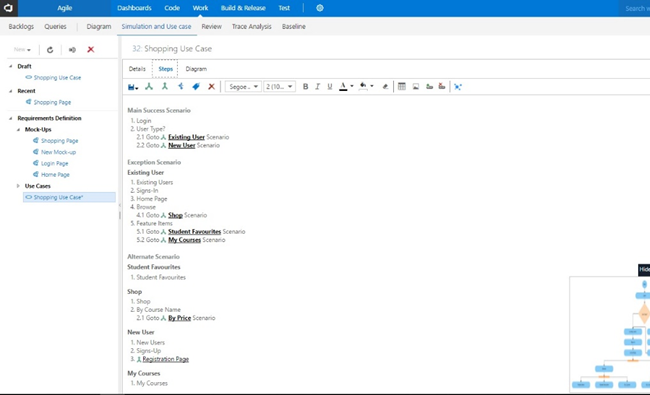
Modern Requirements is a complete requirements management and analysis solution developed to help business analysts and project teams gather and manage requirements more efficiently. This software includes several capabilities that aid in the effective definition, capture, and analysis of requirements. It enables collaborative requirement creation as well as traceability and impact analysis. Modern Requirements covers a wide range of requirements, including functional, non-functional, and regulatory requirements. As well as capabilities for visual modeling, requirement validation, and reporting.
2. Monday

Monday.com is a dynamic work on a computer operating system that provides a platform for project, task, and process management for teams, including business analysts. It has a plethora of features that help to improve communication, streamline workflows, and improve project management. Custom boards, timetables, and dashboards can be created by users to view project progress and track tasks. Monday.com also supports task assignments, the automation of repetitive operations, interaction with third-party applications, and real-time communication inside the platform.
3. Nifty

Nifty is a project management and communication tool that assists teams, including business analysts, in efficiently planning, tracking, and delivering projects. It provides a single workspace for teams to organize projects, create goals, and effectively communicate. Also, it includes features such as task lists, project schedules, file sharing, and built-in communication capabilities. Nifty can be used by business analysts to design project roadmaps, track progress, and engage with team members and stakeholders.
4. Teamwork

Teamwork is an all-in-one project management and collaboration platform that gives business analysts and teams the tools they need to successfully plan, execute, and track projects. It has many tools for task management, team collaboration, time monitoring, and project planning. Teamwork can be used by business analysts to generate and manage project tasks, define priorities, and allocate responsibilities to team members.
5. BitImpulse
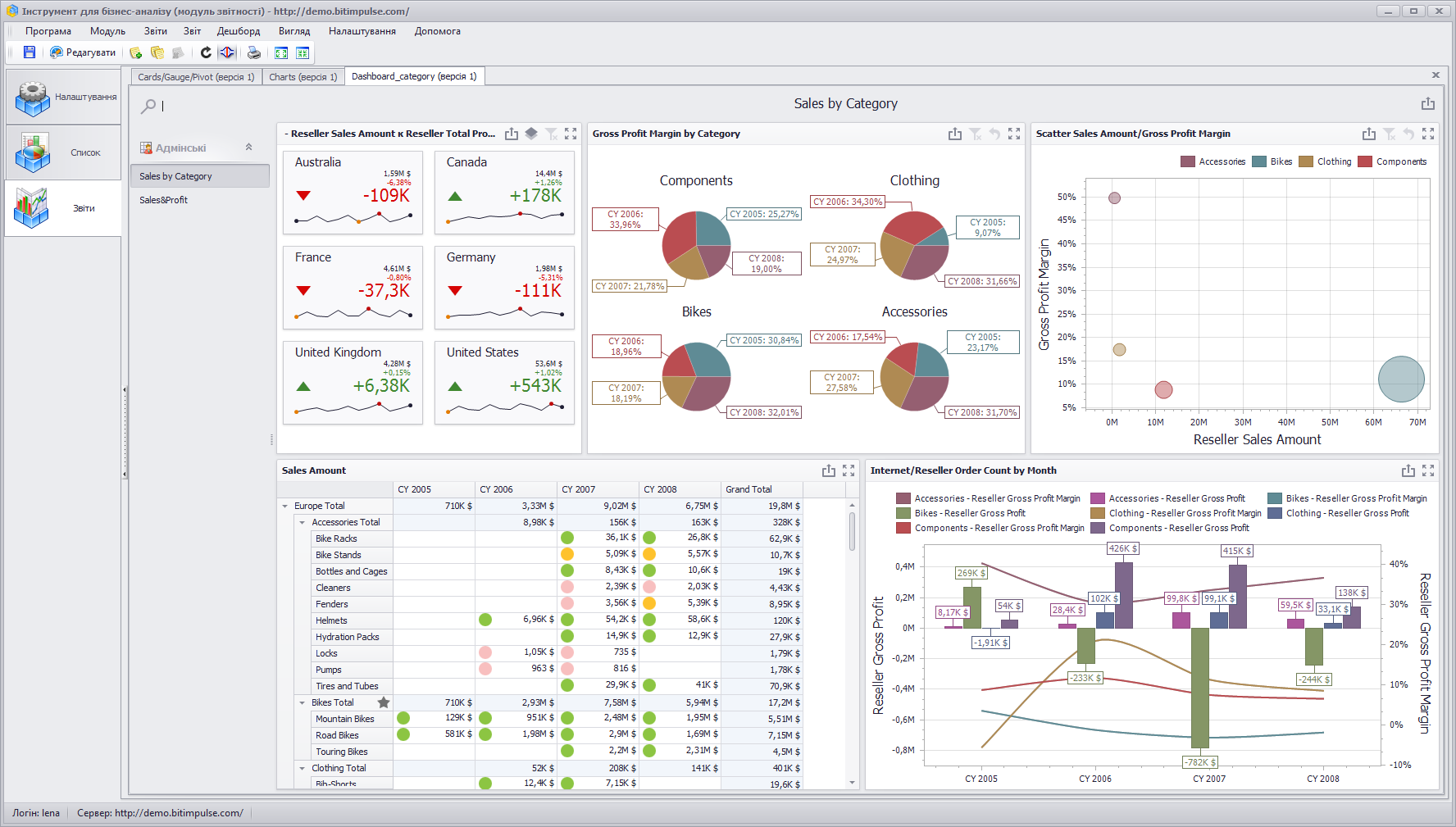
BIT Impulse is a Lviv-based Ukrainian information technology startup. It is a company that specializes in analytical tasks. Additionally, It assists firms in analyzing all business processes, as well as creating and implementing effective analytical steps. It has the potential to simplify business by making work with complex and large amounts of data more accessible and simpler.
The IT solutions from BIT Impulse have been on the market for over 15 years. It is the creator of the first BAT software (Business Analysis Tool), which has been utilized by over 100 Ukrainian and worldwide businesses.
6. Pipedrive

Pipedrive is a versatile customer relationship management (CRM) application designed especially for sales and marketing teams. Its characteristics, however, might also help business analysts who work in sales and lead management. Pipedrive provides lead and contact management. As well as a centralized center for recording and analyzing client data, making it useful for market research and customer analysis.
7. Enterprise Architecture
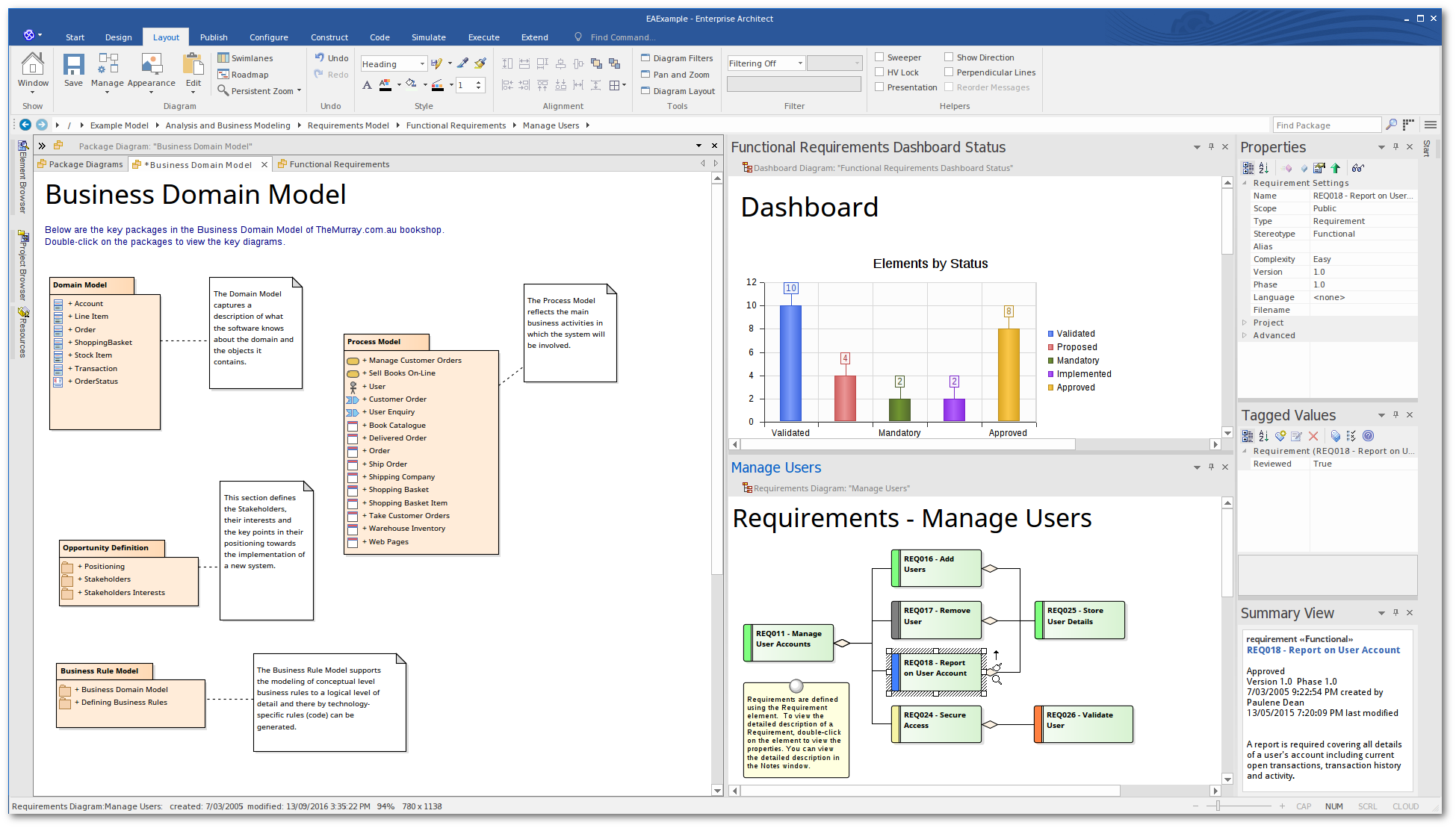
Enterprise Architecture (EA) is a comprehensive method of managing and coordinating an organization’s business processes, information technology infrastructure, data, applications, and technology to meet its strategic goals and objectives. EA is a set of approaches, principles, and frameworks that are crucial for business analysts. Also, those professionals are responsible for the holistic management of an organization’s architecture. While not a single software solution, enterprise architecture is a comprehensive strategy that aids business analysts in understanding, assessing, and optimizing an organization’s architecture to meet its strategic vision and objectives.
8. ActivTrak
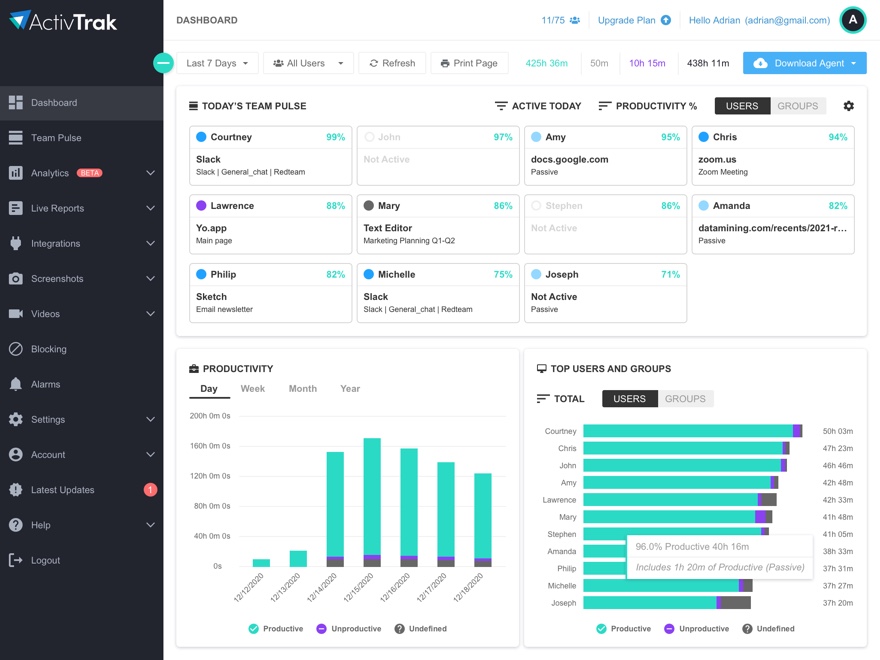
ActivTrak is software for workforce monitoring and productivity tracking. While it is not often utilized directly by business analysts, it may be useful in analyzing and optimizing employee productivity and work processes inside an organization. Productivity scoring and analytics are provided by the software, allowing business analysts to assess staff performance and find potential areas for development or optimization. ActivTrak can be integrated with other software tools and platforms, giving a data source for more extensive analysis and reporting.
9. Zoho Projects

Zoho Projects is a cloud-based project management software that provides a complete range of tools for project planning, execution, and management. While not specifically designed for business analysis, Zoho initiatives can be useful for business analysts participating in a variety of initiatives inside an organization. Zoho Projects includes document storage and sharing features. They are useful for business analysts who need to save project-related documents, reports, and analytical conclusions. Zoho Projects can meet unique project needs, and it interfaces with other Zoho apps and third-party tools, boosting its usefulness.
10. Databox
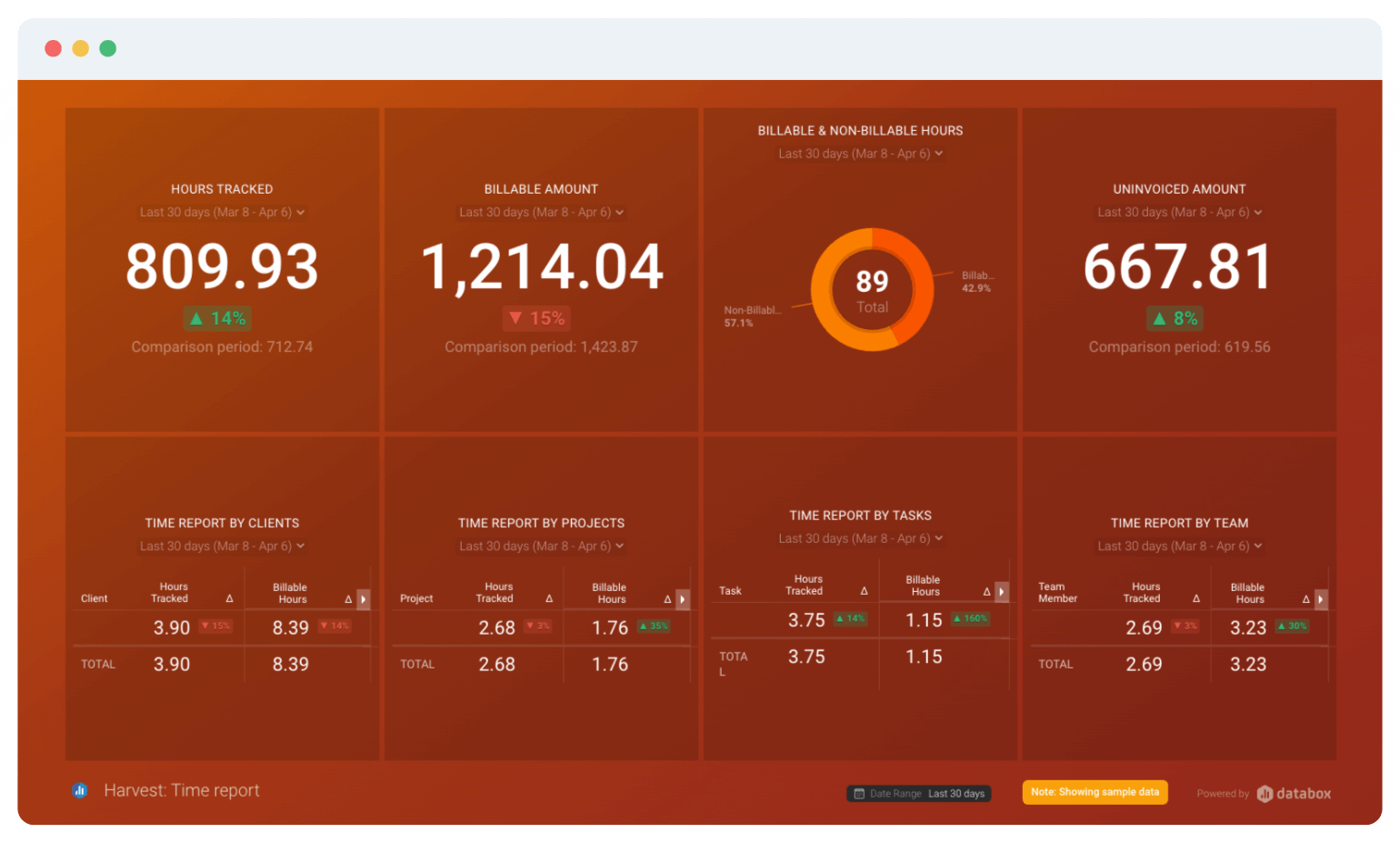
Databox is a robust corporate analytics tool that simplifies data visualization, KPI tracking, and dashboard development. While it is not a major analysis tool, it is a significant resource for business analysts looking to properly display their analysis conclusions and key performance indicators (KPIs). Databox excels in integrating data from multiple sources, allowing users to construct personalized dashboards that provide clear and visually engaging insights. Overall, Databox streamlines the process of sharing data insights, making it a great asset for business analysts looking to convey their results to stakeholders and decision-makers in a compelling and easy-to-understand manner.
What is a business analysis software?
Business analysis software, often known as business analytics software, is a type of computer application and tool that assists business analysts and professionals in acquiring, processing, analyzing, and visualizing data to make more educated business decisions. These software solutions assist firms in extracting important insights from their data, improving efficiency, identifying growth prospects, and addressing difficulties. Data modeling, reporting, data visualization, and sometimes sophisticated analytics and machine learning capabilities are part of business analysis software. It is frequently utilized in many industries to improve decision-making and promote corporate success.
What skills does a Business Analyst need?
A competent business analyst must have both technical as well as soft skills. These include data analysis, requirements collecting, and modeling expertise, as well as strong communication and problem-solving abilities. It is critical to be able to collaborate with stakeholders, adapt to changing situations, and bridge the gap between business and technology. Furthermore, business analysts must be organized, analytical, and capable of efficiently managing projects and prioritizing work.
How can you become a Business Analyst?
A bachelor’s degree in business, information technology Techcanvass Business Analyst Courses, or finance is the first step toward becoming a business analyst. Other requirements include learning the fundamentals of business analysis methodologies, developing pertinent data analysis, requirements gathering, and modeling skills, and thinking about earning certifications like CBAP or CCBA. Seek internships or entry-level jobs to obtain real-world experience, hone your communication and problem-solving abilities, and connect with people in the field to find work and advance your business analysis career.
What are the 3 most important skills of a business analyst?
The following are the three primary competencies of a business analyst:
- Analytical Skills: To analyze complicated information and make data-driven decisions, business analysts must excel at data analysis and critical thinking.
- Effective communication, including active listening and clearly expressing knowledge: To both technical and non-technical stakeholders, is critical for successful business analysis.
- Problem-solving ability: Business analysts must be able to detect difficulties, analyze root causes, and offer effective solutions that correspond with an organization’s goals.
Conclusion: What software does business analyst use?
Ultimately, the question “What software does a business analyst use?” emphasizes the vital function of software tools in business analysts’ daily operations. To efficiently execute their tasks, these professionals rely on a varied toolkit of software. Which includes data analysis, requirements administration, project management, data visualization, and communication tools. The individual needs of each project and organization influence the software selection, reflecting the adaptive nature of the business analyst’s position. In a fast-paced business environment, the correct software enables business analysts to connect the gap between business objectives and technical solutions. This eventually leads to informed decision-making and organizational success.





